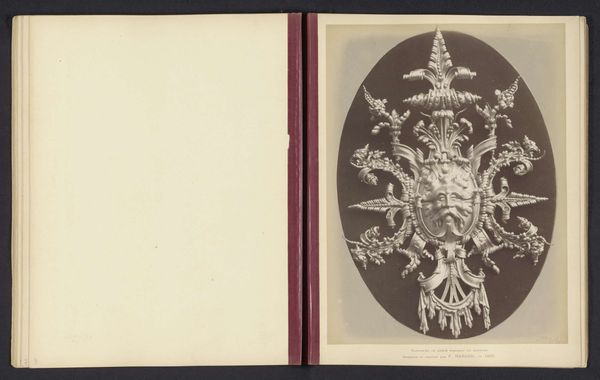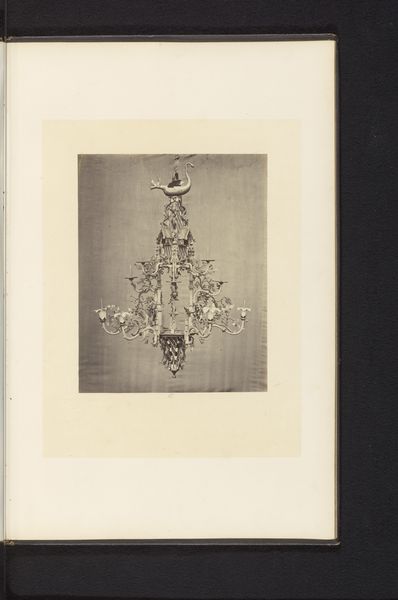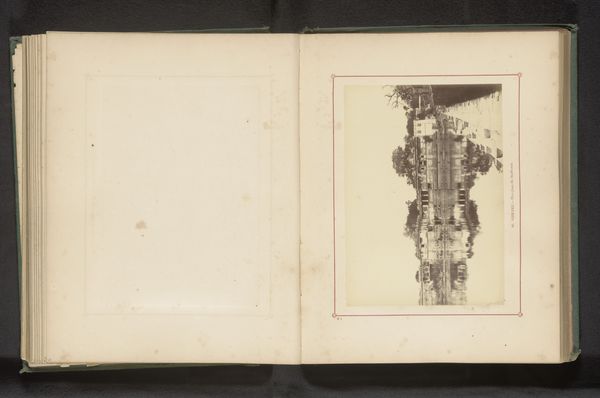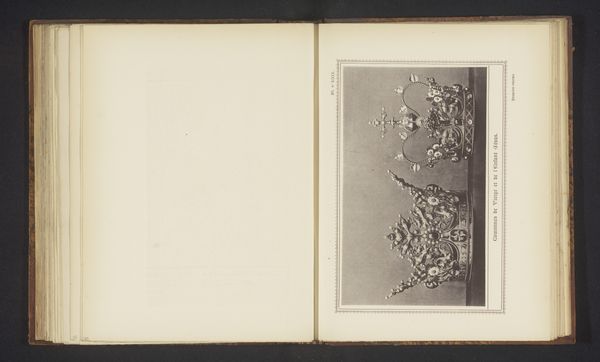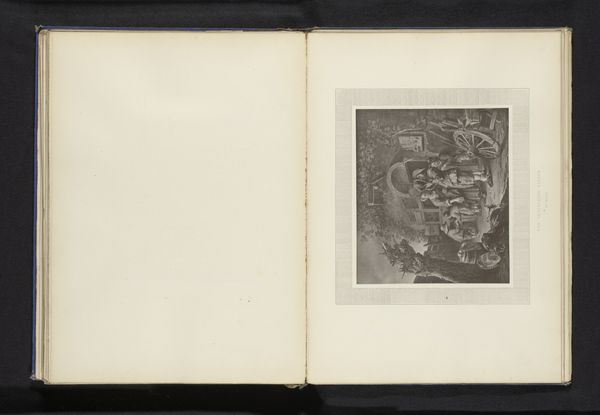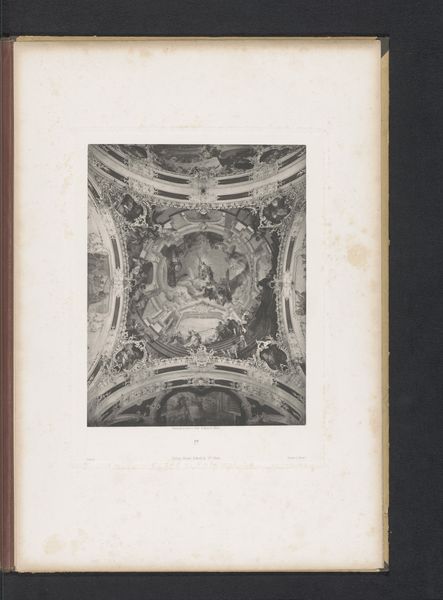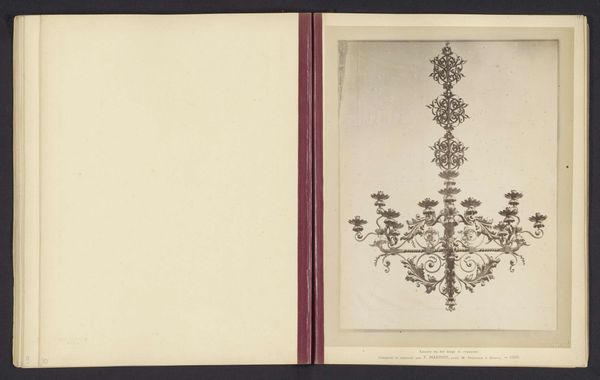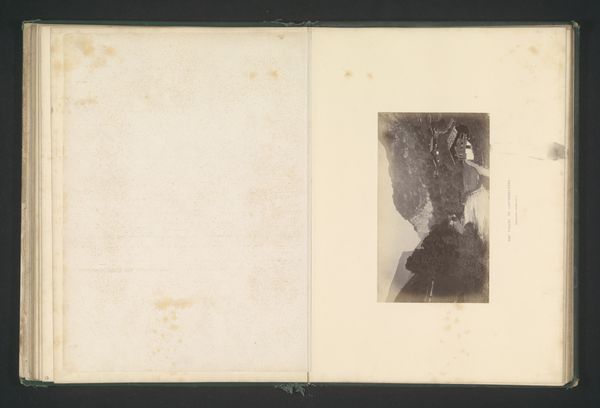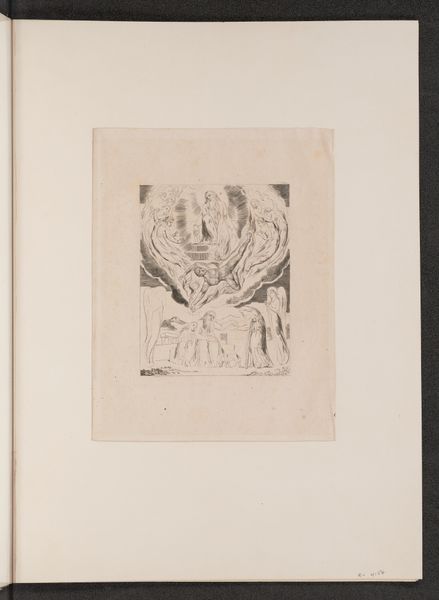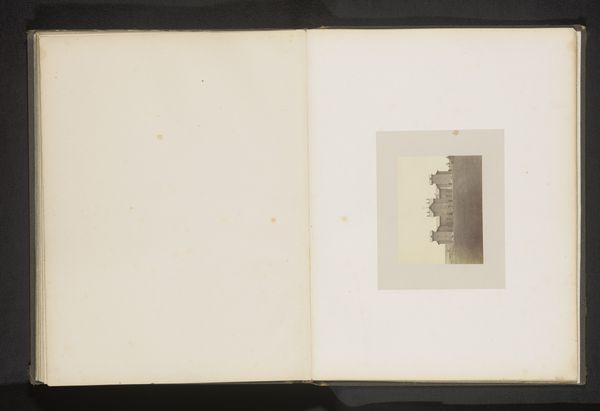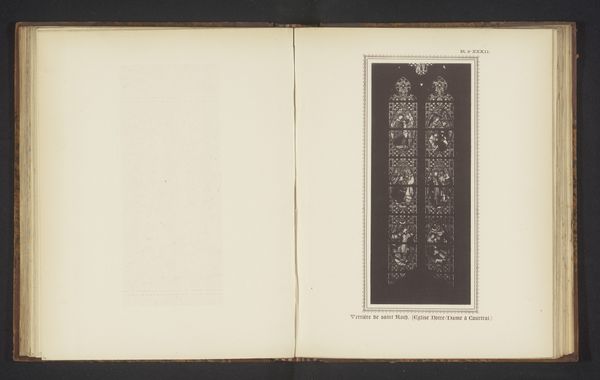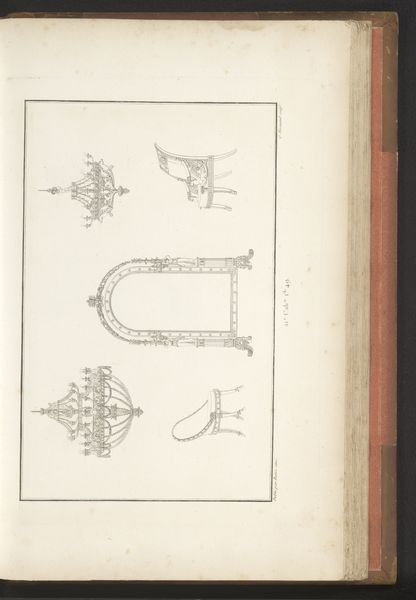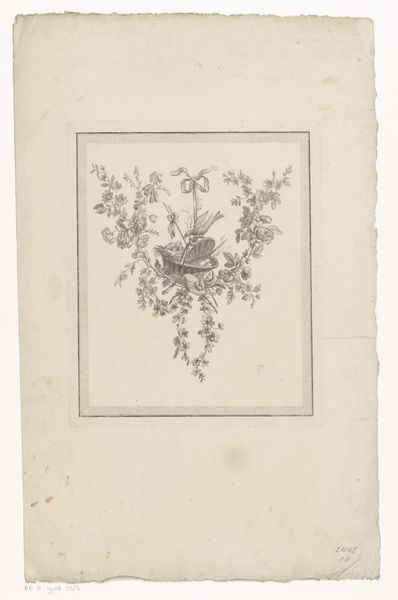
Metalen kroonluchter uit een kerk in Mechelen, opgesteld op een tentoonstelling over religieuze objecten uit de middeleeuwen en renaissance in 1864 in Mechelen before 1866
0:00
0:00
print, metal, engraving
#
medieval
# print
#
metal
#
11_renaissance
#
engraving
Dimensions: height 219 mm, width 168 mm
Copyright: Rijks Museum: Open Domain
Curator: Let's consider this image, a print by Joseph Maes, dating to before 1866. The title is "Metalen kroonluchter uit een kerk in Mechelen, opgesteld op een tentoonstelling over religieuze objecten uit de middeleeuwen en renaissance in 1864 in Mechelen," which translates to 'Metal chandelier from a church in Mechelen, exhibited at an exhibition of religious objects from the Middle Ages and Renaissance in 1864 in Mechelen.' Editor: It's austere, but strikingly detailed. The engraving captures a rather ornate metal chandelier, very evocative. There's a strong vertical axis, which feels, dare I say, ecclesiastical, even in monochrome. Curator: The chandelier itself is the focal point, its symmetrical arrangement creating visual harmony. The levels, the branching arms—each element contributes to the overall structure and rhythmic balance of the design. Notice how the texture of the metal is meticulously rendered through hatching and cross-hatching. Editor: Absolutely, and beyond the formal elegance, the chandelier, once illuminated, becomes a symbol of enlightenment. Consider its presence in a church setting; light overcoming darkness, faith illuminating the sacred space. Curator: Indeed. The levels themselves could represent hierarchies— perhaps earthly and heavenly realms conjoined through artistic skill and devotion. The craftsmanship itself serves as a devotional act. Editor: It does prompt reflection on the power of objects, doesn't it? Taking the chandelier outside of the church, setting it in a museum context. The meaning evolves. It speaks now about religion, craftsmanship and history, each intersecting to affect how we understand each other. Curator: Quite right. Shifting it from sacred space to secular display reframes our reading of the object. The chandelier remains materially unchanged, but conceptually transformed. Editor: The engraving, viewed alongside all these contexts, is about so much more than a lighting fixture; it preserves memory, and invites contemplation about past beliefs, skills, and societal values. Curator: It allows for precisely that - a semiotic analysis through both form and context. I think the clarity of its execution serves that interpretive shift rather well.
Comments
No comments
Be the first to comment and join the conversation on the ultimate creative platform.
